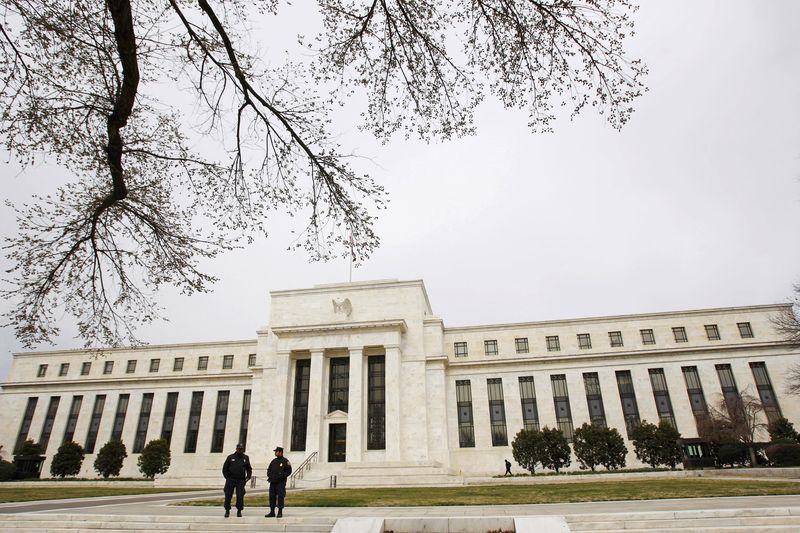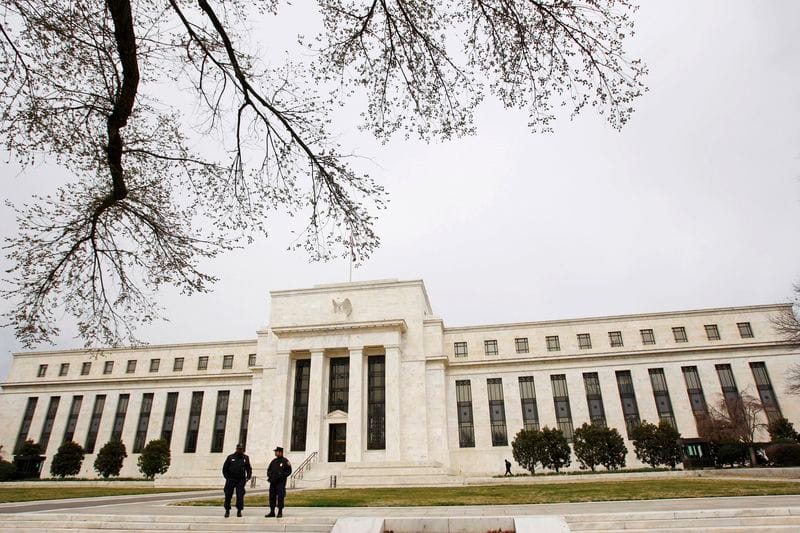By Ann Saphir
(Reuters) – Benign inflation data and a cooling job market aside, U.S. credit conditions featuring tepid loan demand and stiff terms may also be bolstering confidence among Federal Reserve officials that price pressures are set to ease further, paving the way for interest rate cuts in coming months.
U.S. central bankers will have the latest readings from a quarterly survey of bank loan officers in hand as they weigh monetary policy at a rate-setting meeting that wraps up on Wednesday.
Although that report won’t be made public until Monday, analysts say other available data suggests it will show the same pattern as in recent quarters: Weakening demand for loans from consumers and businesses alongside tightening credit standards from lenders emblematic of an economy losing steam but not at the kind of accelerating pace that points to an approaching recession.
“I think they like where credit conditions are – they like to see this slackening of demand, they like to see that banks have tightened a lot” as borrowing costs have risen, said Warren Kornfeld, a banking credit analyst at Moody’s (NYSE:).
The lending survey data Fed officials saw in conjunction with last July’s policy meeting showed conditions then at their most stringent in years – and demand at the weakest – across mostly all categories of credit for households and businesses.
Kornfeld said loan demand more recently is still cooling, and credit conditions are tightening, but less sharply than before, meaning conditions are “getting closer to a neutral state,” he said. “It’s all set up at this point in time for a ‘soft landing,'” referring to a scenario in which the Fed tames inflation without triggering a painful recession or sharp rise in unemployment.
LOAN GROWTH SLOWDOWN
The Fed’s rate hiking campaign, begun in March of 2022, prompted a rise in lending standards and slowdown in loan growth.
Those trends continued even after the central bank’s last rate hike in July of 2023, but with less intensity than before.
Other data show that loan growth for most uses has slowed but not reversed course.
Meanwhile, demand for loans may actually be on the rise in some parts of the country.
“The big picture is a soft landing on the bank credit side as well as the real side: still tight, but not tightening as quickly as before,” said Derek Tang, an economist at forecasting firm LH Meyer. The longer the Fed waits to lower the policy rate, though, the more anxious they will become over possible cracks “because recessions are nonlinear and hard to stop once they start,” he said.
The cracks are hard to see so far, particularly on the real-economy side, with unemployment, at 4.1%, higher than it has been since the Fed’s rate hikes began but still low by historical standards, and inflation coming down slowly toward the Fed’s 2% goal.
The U.S. household debt delinquency rate rose to 3.2% during the first quarter versus 3.1% in the final three months of last year, New York Fed data shows. That’s below the 4.7% seen at the end of 2019 before the start of the COVID-19 pandemic.

Still, credit-card borrowers who have reached their borrowing limits – this group tends to be disproportionately younger and lower-income – have seen a particularly sharp rise in delinquency rates, New York Fed researchers found.
“It does seem as though lower-income households are more strained in their personal finances and that will have a ripple effect,” Tang said. “September would not be too late to start easing the policy rate; actual interest rates will start to fall beforehand and this way the Fed can be a bit more sure about inflation before it begins.”

